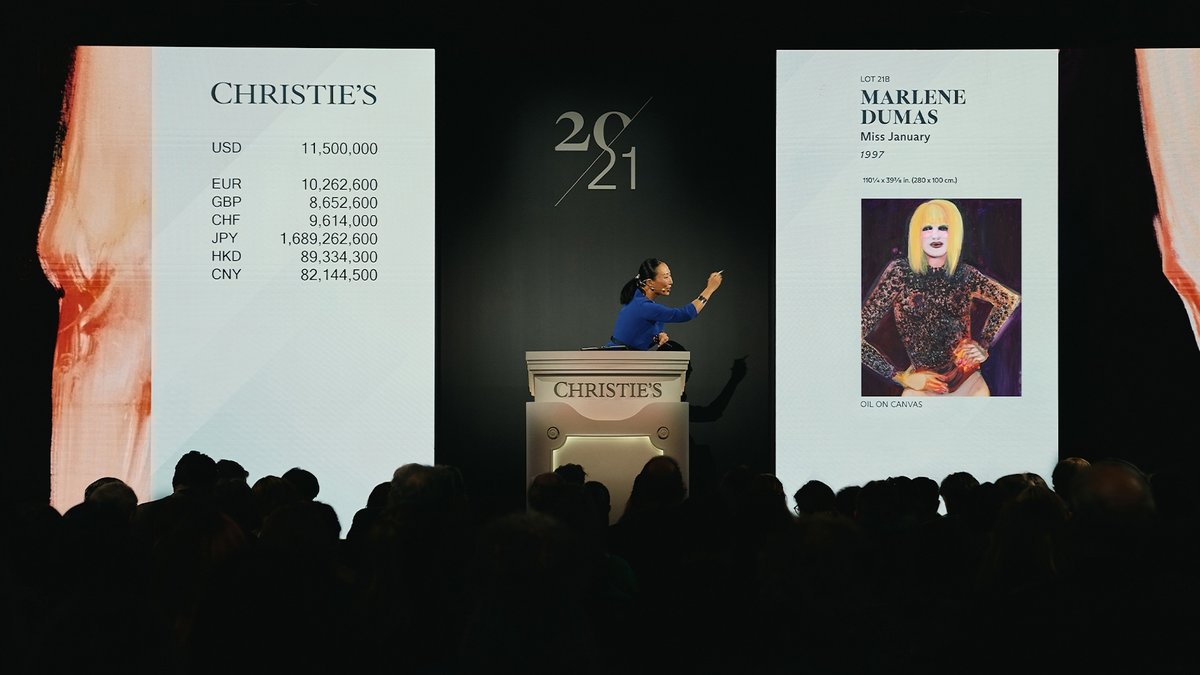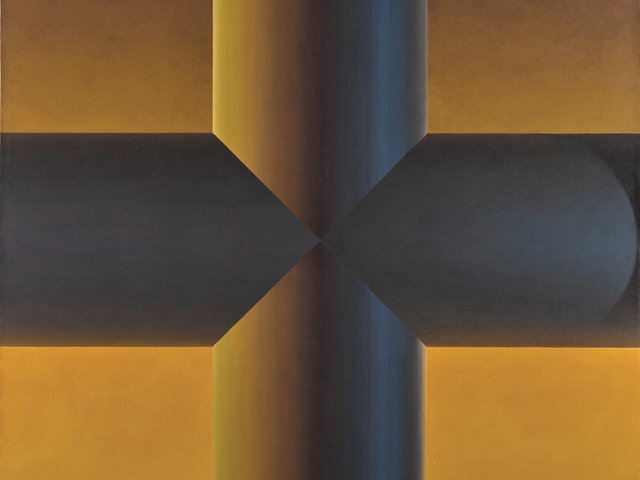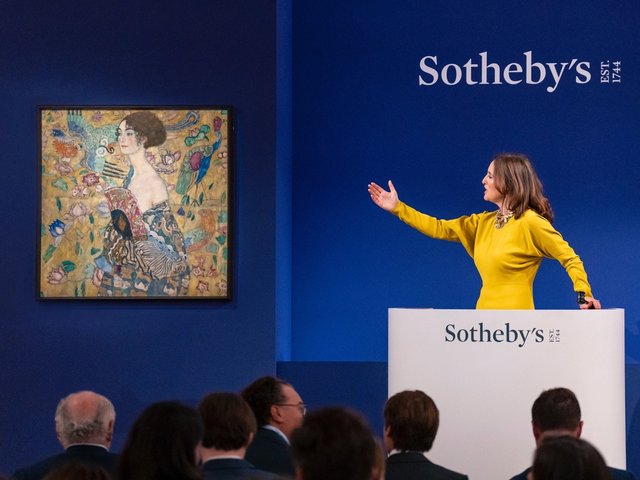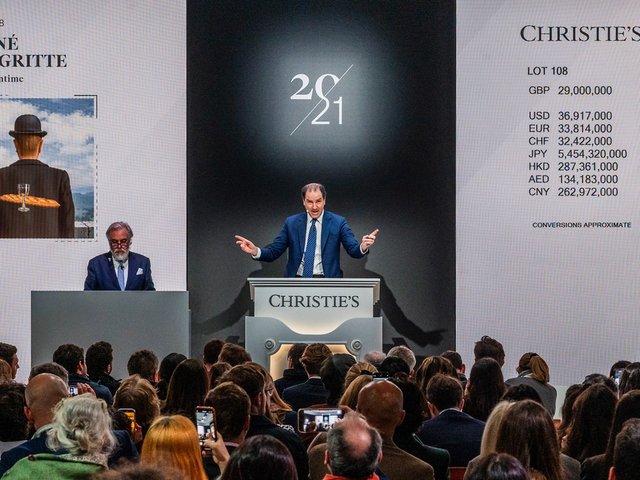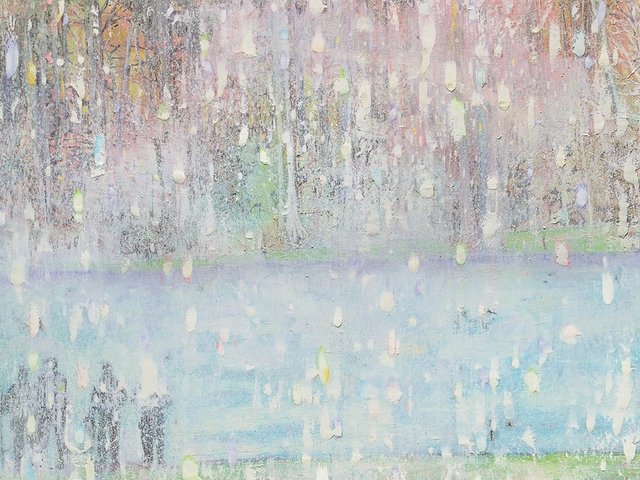“It’s a tough market, we’re not expecting fireworks,” Christie’s chairperson Guillaume Cerutti told The Art Newspaper moments before the auction house’s 21st century evening sale began. Cerutti’s muted forecast was proven right by the end of the thin, 38-lot auction, which made $79m ($96.5m with fees)—just within the revised presale estimate of $77m to $114m (all estimates are calculated without fees), but below the original $82m low estimate that included lots that were ultimately withdrawn. This figure is also south of the totals made from equivalent sales last November ($106.5m) and May ($114.7m, both with fees).
Perhaps spooked by the flopped $70m Giacometti last night at Sotheby’s, four lots were withdrawn prior to the sale, including an un-guaranteed Christopher Wool painting estimated between $3.5m to $5.5m and works by Rudolf Stingel and Mike Kelley, (both est $500,000-$700,000). With just two passes, the evening had a strong sell-through rate of 92%, though this was heavily pre-ordained by around 60% of the sale backed by third-party guarantees.
As with Christie’s 20th century evening sale on Monday (12 May)—when new highest auction were achieved for Dorothea Tanning and Remedios Varo—it was women who won big Wednesday night: three of the four records set during the sale were for female artists.
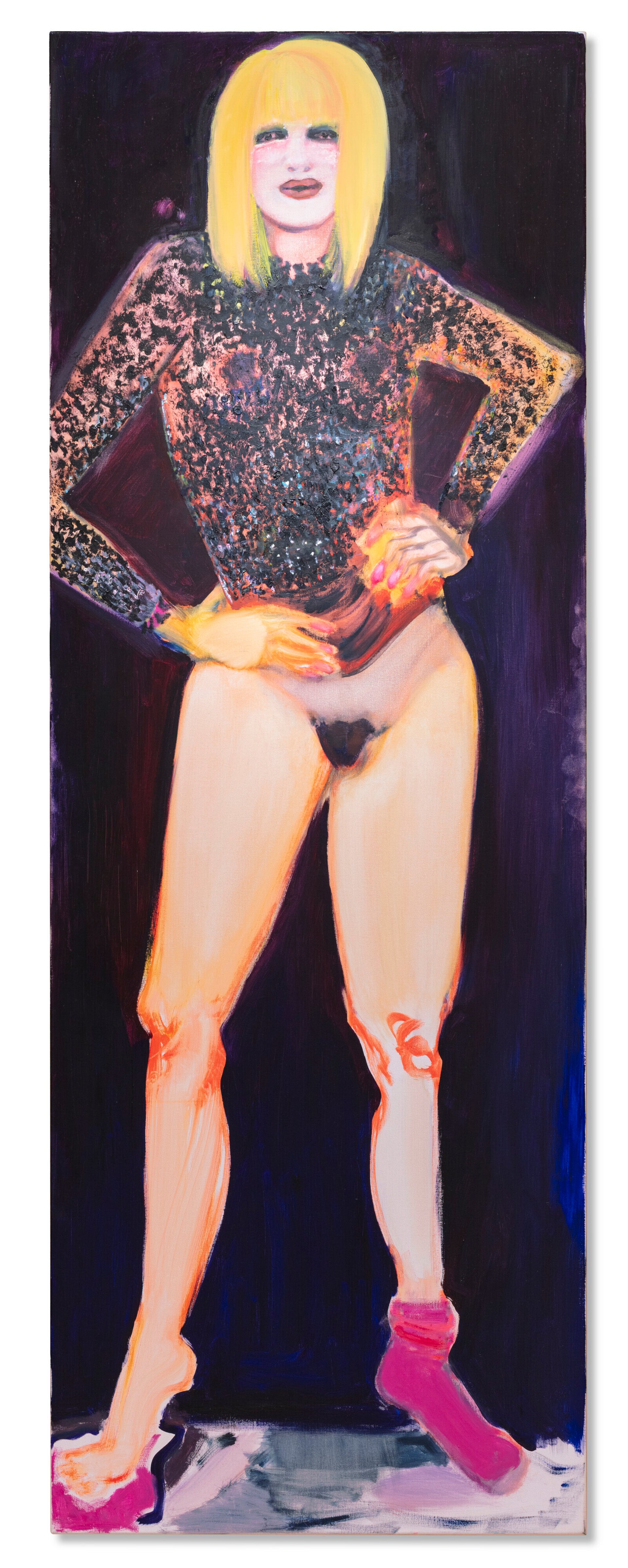
Marlene Dumas, Miss January, 1997 Courtesy Christie's Images Ltd. 2025
Chief among these is Marlene Dumas, whose 1997 painting Miss January made art market history, albeit with relatively little fanfare. Fetching $11.5m—or $13.6m with fees—it is now the most expensive work by any living female artist sold at auction. The towering portrait, measuring 280cm in height, depicts a beauty queen standing confidently, nude from the waist down save for a single pink sock. It was sold from the collection of the Miami mega-collectors Mera and Don Rubell, who acquired it from Galerie Paul Andriesse in Amsterdam more than 20 years ago.
Miss January was brought to the rostrum midway through the sale, which was gamely steered by the auctioneer Yu-ge Wang. Eliciting just two bids, it went swiftly to its guarantor via Christie's deputy chairman Sara Friedlander. Miss January supplants the previous record-holder, Propped (1992) by Jenny Saville, which in 2018 sold at Sotheby's in London for £8.2m (£9.5m with fees, which was then around $12m). Dumas's previous auction record was $6.3m for The Visitor (1995), sold at Sotheby's London in 2008.
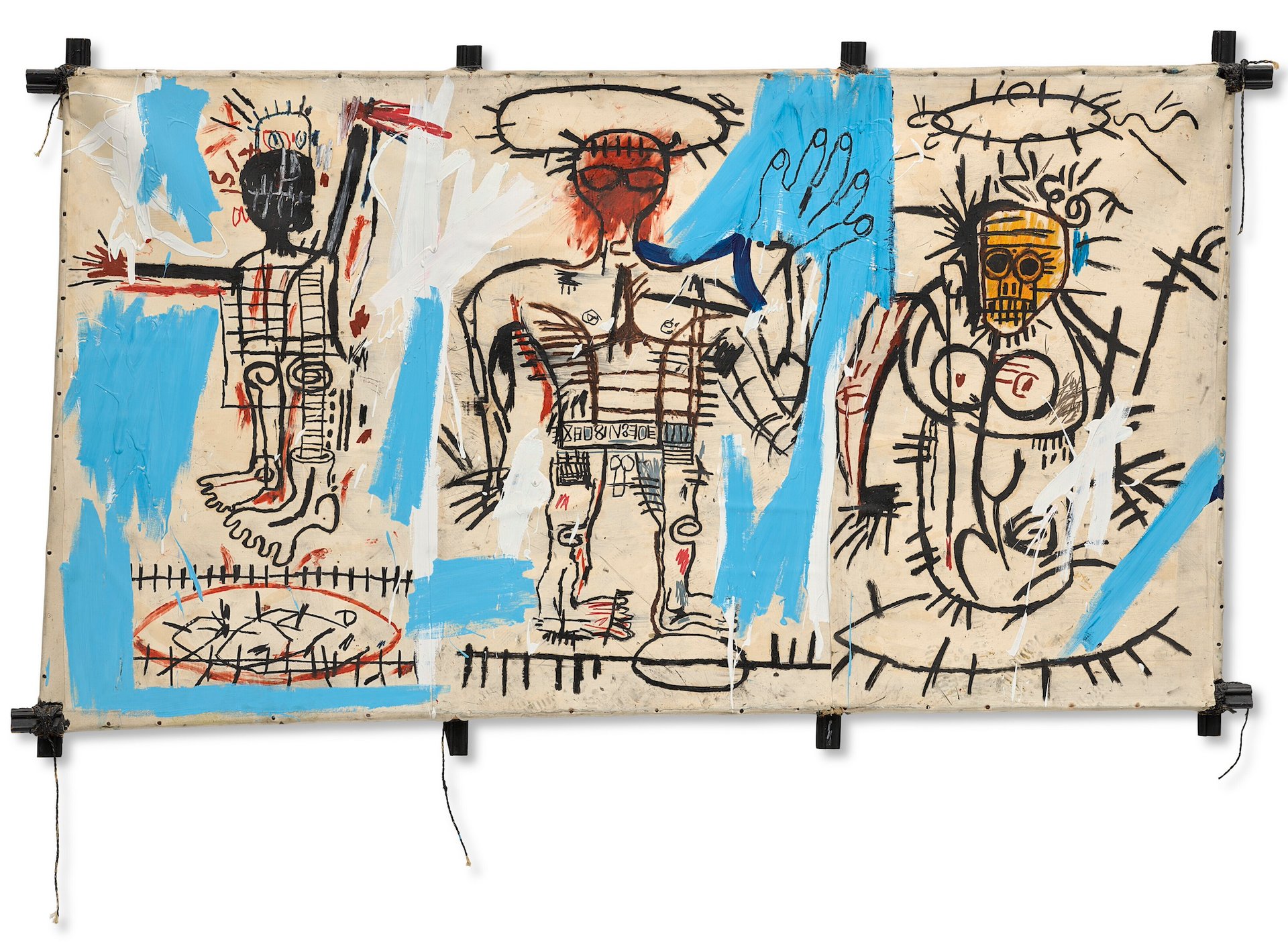
Jean-Michel Basquiat, Baby Boom, 1982 Courtesy Christie's Images Ltd. 2025
The Dumas record was almost immediately followed by the evening’s top lot, Jean-Michel Basquiat’s Baby Boom (1982), thought to be a portrait of the artist and his parents, and which has been loaned to around 20 monographic shows. Wang quickly walked the painting up to its $20m low estimate, where it swiftly hammered to a bidder one the line with Christie’s new global president Alex Rotter. With fees the price came to $23.4m.
One of the evening’s rare pockets of deep bidding was elicited for Simone Leigh’s Sentinel IV. The elegant, monumental bronze was bought by the consignors in 2020, the year of its execution, from Hauser & Wirth, which represented her for less than two years before she left to Matthew Marks. Three bidders chased the work up to $4.7m ($5.7m with fees), going to a phone bidder with Nick Cinque, near the upper end of its $3.5m to $5.5m estimate. This was more than enough to best Leigh’s previous record of $2.8m, set at Sotheby’s in London in 2023.
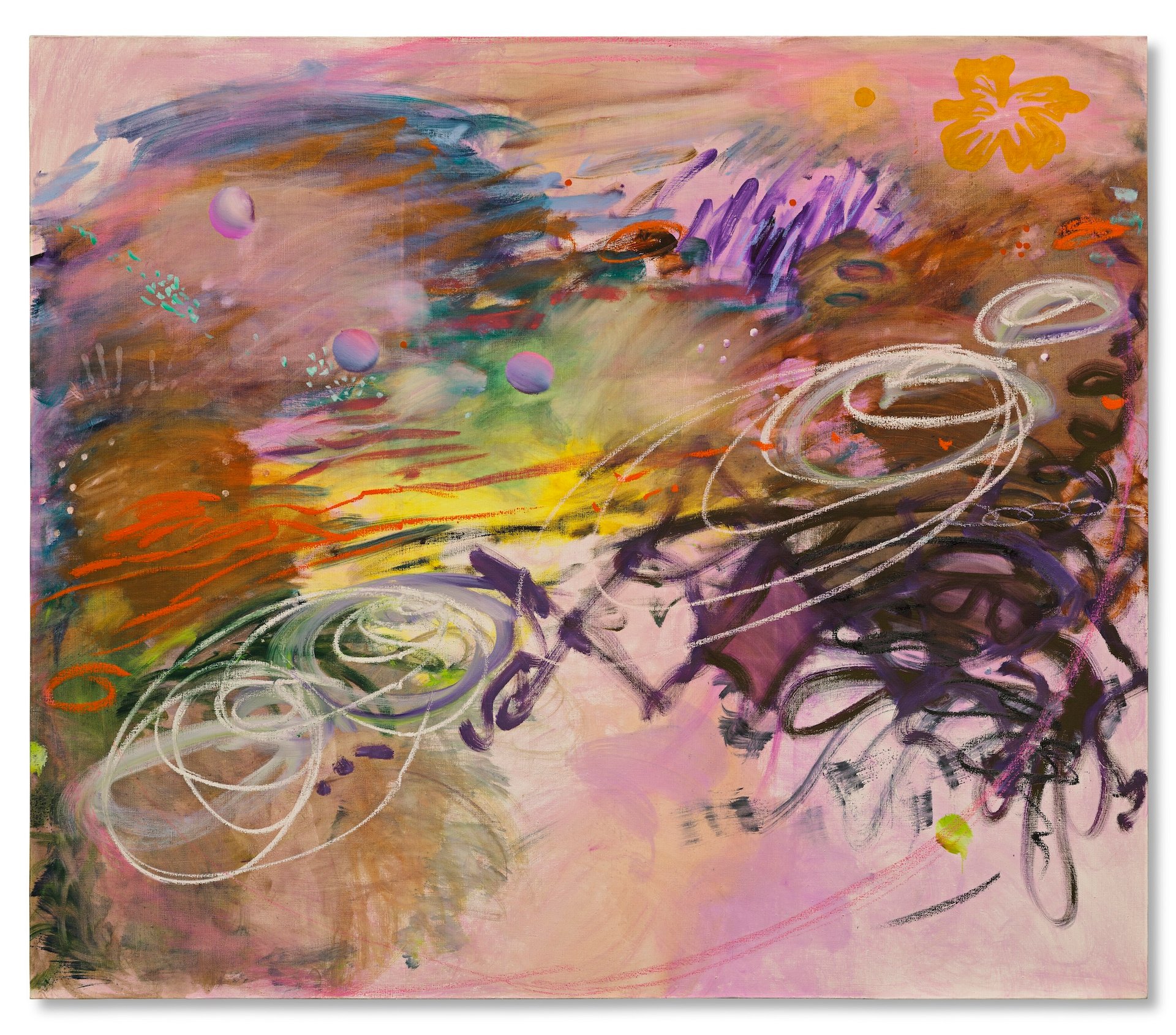
Emma McIntyre, Up bubbles her amorous breath, 2021 Courtesy Christie's Images Ltd. 2025
Further records were also set for paintings by Emma McIntyre and Louis Fratino—respectively at $201,000 for Up bubbles her amorous breath and $756,000 for You and Your Things (both with fees). They were among the small handful of ultra-contemporary names featured in the sale, a stark reversal from just a few years ago, when wet paintings by young artists dominated this sales category.
Strong prices were also achieved for Elizabeth Peyton, whose painting Jarvis and Liam Smoking hammered at $1.3m ($1.6m with fees), above its $1.2m high estimate, and Roni Horn’s cast glass sculpture Opposite of White v 2 (2007), which made $1.1m (with fees) against an estimate of $700,000 to $1m. Works by women artists however did not prove totally impervious to market malaise: a Louise Bourgeois marble sculpture of an arm attached with a hand at either end, estimated between $500,000 to $700,000, was passed.
“Tonight was a story of women, all the best bidding was for female artists,” the adviser Wendy Cromwell said shortly after the sale closed. “But overall it was a quiet sale and the room was half empty, it was only trade.” She added: “What we saw tonight was realistic bidding, in a way it’s what auctions were like back in the day—dozens of bids on each work, prices catapulting, that is part of an exuberant moment that we are no longer in.”
New York's marquee spring auctions continue on Thursday (15 May) with Christie's day sale of post-war and contemporary art and Sotheby's three-part evening auction of works from the estate of Barbara Gladstone and the collection of Daniella Luxembourg, plus by its multiple-owner contemporary art sale.


